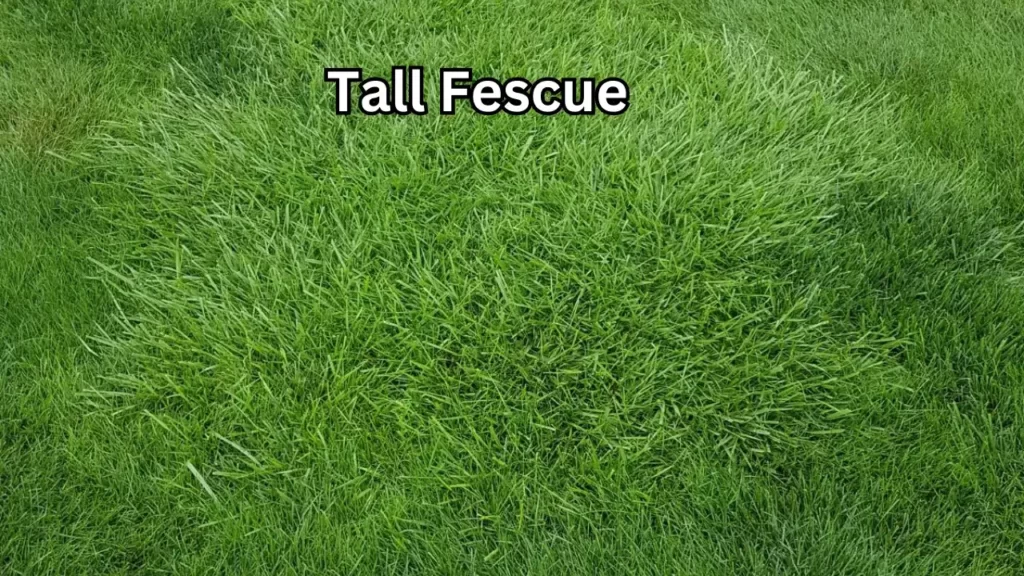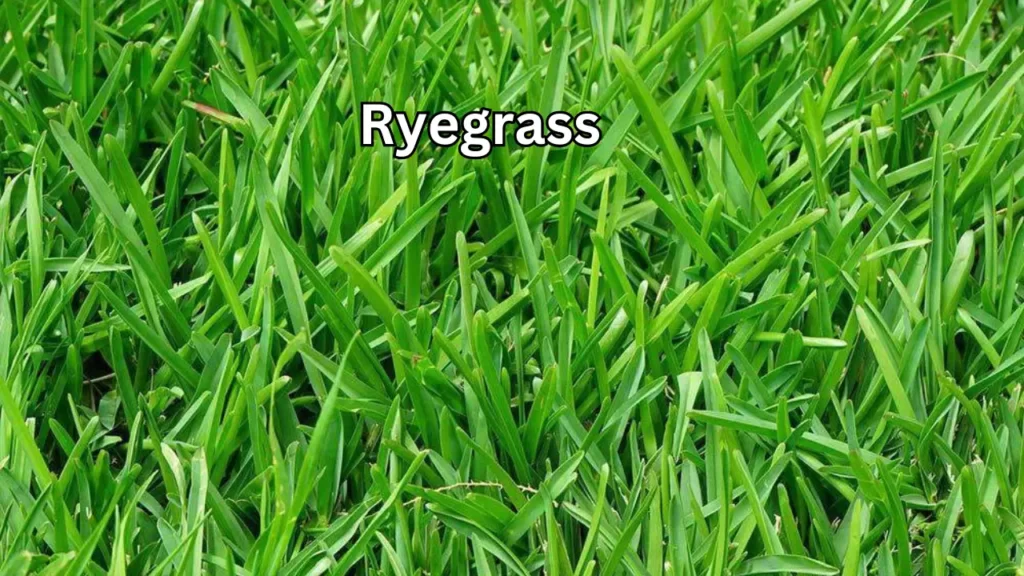Choosing the right grass for your garden will increase the beauty as well as provides multiple benefits. But choosing the right grass which soots for your lawn is a big task. Kentucky Bluegrass, fescue, and Ryegrass are the three most popular grass types most homeowners prefer.
So, here in this article, we will compare the Kentucky Bluegrass vs Fescue vs Ryegrass including its different abilities and features so you can choose the right grass for your lawn from these three options.

Kentucky Bluegrass vs Fescue vs Ryegrass
| Features | Kentucky Bluegrass | Fescue | Ryegrass |
|---|---|---|---|
| Climate Adaptability | Thrives in cool-season regions | Adaptable to both cool and warm-season climates | Best suited for cool-season regions |
| Appearance | Fine texture, lush green color | Coarser texture, varying shades of green | Medium texture, bright green color |
| Traffic Tolerance | Excellent traffic tolerance | Moderate traffic tolerance | Fair traffic tolerance |
| Shade Tolerance | Moderate shade tolerance | Excellent shade tolerance | Fair shade tolerance |
| Drought Resistance | Average drought resistance | Good drought resistance | Fair drought resistance |
| Germination and Establishment | Moderate establishment process | Relatively easy establishment | Quick germination, ideal for temporary lawns |
| Disease Resistance | Good resistance to common diseases | Generally resistant but susceptible to specific diseases | Fair resistance to diseases |
| Watering Needs | Requires regular watering during dry periods | Moderate water requirements | May require supplemental irrigation during dry spells |
| Cost | Can be more expensive | Can vary in cost | Generally more budget-friendly |
| Environmental Impact | Considered environmentally friendly | Considered environmentally friendly | Considered environmentally friendly |
Also Read: Kentucky 31 Tall Fescue vs bluegrass know which is better for your lawn
Kentucky Bluegrass
The Kentucky bluegrass (Poa pratensis) is a type of grass species that is popularly known by homeowners due to its fine texture, lush green color, and self-repairing ability. The Kentucky bluegrass grows in cold regions so they are commonly found in the northern parts of the united states.
The Kentucky bluegrass has the ability to withstand high foot traffic, so it is commonly used for the area with high foot traffic such as golf courses and sports fields.
Fescue
Fescue is also a cold-season grass that is popular for durability and adaptability. There are many types of fescue grass which has been used for different types of lawns such as fine fescue, tall fescue, and creeping red fescue.
Due to the adaptability feature fescue is commonly found in the transition zone and it can withstand different climate conditions. The fescue has a coarser texture and they are well suited in the area with moderate foot traffic.
Ryegrass
The Ryegrass is popularly known for its quick germination and establishment which makes it the best grass for overseeding and temporary lawns. The ryegrass is categorized into two types annual ryegrass and perennial ryegrass.
The annual ryegrass provides used for short-term purposes whereas the perennial ryegrasses are used for long-lasting purposes. So, the ryegrass is used to fill in the bare spots and enhance the appearance of the existing lawn.
Climate and Adaptability
The Kentucky bluegrass thrives in cool-season climates, such as the northern part of the united states which has the temperature around between 60°F and 75°F (15°C and 24°C) and it needs a moderate amount of sunlight.
The fescue can grow in a wide range of climate conditions and it can thrive in both cool and warm conditions. So, they perform well in the area with transition zone which experiences both warm and cold climates.
The ryegrass can perform well in a cold season region and it can withstand the cold temperature than any other grasses. So, ryegrass is best suited for a region that experiences extremely cold temperatures.
Also Read: Red Fescue vs Tall Fescue a quick comparison
Appearance and Texture
Kentucky bluegrass has a fine texture which gives a dense carpet-like appearance. Also, the dark green color gives a beautiful visual appeal to the lawn.
On the other hand, fescue has a coarser texture compared to Kentucky bluegrass, and this gras color varies from dark green to light green shades.
Finally, the ryegrass has a medium texture and normally has a bright green color.

Maintenance Requirements
Maintenance is the most important factor to keep the grass healthy. Primarily Kentucky bluegrass requires regular maintenance which includes watering, mowing, and fertilization. Also, it has a moderate growth rate so it needs to be mowed at a height of around 2-3 inches(5-7.5 cm).
On the other hand, the fescue is opposite to the bluegrass it has a slower growth rate and needs less mowing. It has to be moved at a height of 3-4 inches (7.5-10 cm).
Finally, the ryegrass is the same as Kentucky bluegrass it has a faster growth rate and needs to be mowed regularly. It is suitable to mow it at a height of 2-3 inches(5-7.5 cm).
Disease Resistance
Kentucky bluegrass is capable to resist and withstand common lawn diseases such as dollar spot and leaf spot.
Fescue grass commonly resists most lawn disease but it will be susceptible to red thread and brown patches.
Ryegrass has not had the ability to withstand lawn diseases so it needs to be regularly inspected and maintained to prevent infections.
Also Read: Garden Lye a powerful ingredient for thriving garden
Traffic Tolerance
Kentucky bluegrass has an excellent ability to withstand moderate heavy foot traffic. It has a self-repairing ability which helps it quickly recover from damage.
Fescue has moderate tolerance to foot traffic so it is suitable to use this grass in the area with less foot traffic.
Ryegrass is not good to withstand heavy foot traffic so this grass is also not good in the area with heavy foot traffic.
Shade Tolerance
When it comes to shade tolerance all of these grass types have different abilities. The Kentucky bluegrass has moderate shade tolerance it will perform better in full sunlight or partial shade.
The fescue grass varieties are opposite to the Kentucky bluegrass, fescue can perform well even in a limited amount of sunlight so its shade tolerance is high compared to the other grasses.
Ryegrass is also similar to the Kentucky bluegrass it has fair shade tolerance and it will struggle in an area with heavy shade.

Drought Resistance
Kentucky bluegrass is less resistant to drought conditions and it needs regular watering in a dry season.
The fescue is a good resistant to the drought condition and it can survive in the dry season with limited water availability.
The ryegrass is fairly resistant to the drought condition so it also needs a regular watering system during the dry season.
Seeding and Establishment
Kentucky bluegrass is established commonly through seeds, sods, or springs. Also, it needs proper soil preparation and regular watering for a successful establishment.
Fescue grass is commonly established from seed or sod and it does not need much requirement for establishment.
Ryegrases are established through the seeds and they will germinate quickly compared to other grasses so they are preferred for temporary lawn creation.
Cost Considerations
Now the cost of Kentucky bluegrass, fescue, and ryegrass varies depending upon some factors such as region, variety, and method of establishment. Generally, Kentucky bluegrass and fescue are more expensive than ryegrass.
Despite the grass cost the installation process of these grasses in your lawn will be expensive depending upon the method you use. The sod installation is expensive where as the seeding process is a more budget-friendly option.
Also Read: Clumping Fescue vs Tall Fescue Understanding the differences
Environmental Impact
Kentucky bluegrass, fescue, and ryegrass all of these three grass types are environmentally friendly grasses that can be used in lawns. They provide many benefits to the lawn such as absorbing rainfall, preventing soil erosion, and improving the air quality.
But excessive use of chemical fertilizers ad water can impact the environment negatively so, proper lawn care and maintenance are required to reduce the negative effects.

FAQs
Is Kentucky bluegrass suitable for warm climates?
No, Kentucky bluegrass thrives in cool climates and it may suffer to grow in warm climate conditions.
Can fescue grass tolerate foot traffic?
Yes, fescue can tolerate moderate foot traffic but it will suffer from heavy foot traffic so less foot traffic is suitable for fescue grass types.
Is ryegrass a good option for overseeding?
Yes, ryegrass is a good option for overseeding and it is used to enhance the appearance of lawns. Also, its quick germination ability is used to create temporary lawns.
How often should I water Kentucky bluegrass during dry periods?
During dry periods Kentucky bluegrass requires more water so it should be watered deeply but frequently. Aim for about 1 to 1.5 inches (2.5 to 3.8 cm) of water per week.
What is the most cost-effective way to establish fescue grass?
Seeding is the most cost-effective way to establish fescue grass.
Conclusion
Kentucky bluegrass, fescue, and ryegrass all these three types of grasses have their features and abilities which make them suitable for different lawns and climate conditions. So, pick the right grass for your lawn based on different factors which suites your lawn. Properly care and maintain the grass to grow them in healthy condition.
Regularly inspect the grass for any pests or diseases which can affect the grasses then take appropriate steps to prevent the damage.
